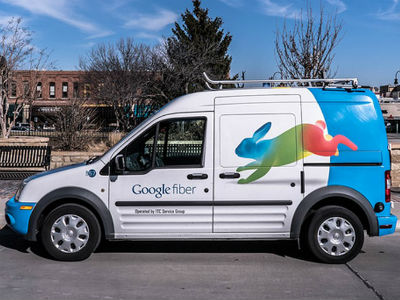Google Fiber Ended 2014 With 29,867 TV Subs: Report

Google Fiber is stirring fear among incumbent telcos and cable operators, but the provider has yet to make a big dent in the market, at least with respect to video, in the early going, according to new subscriber data uncovered by MoffetNathanson.
Citing figures released today by the U.S. Copyright Office, which tracks video subs due to compulsory license fee requirements, the firm’s report found that Google ended 2014 with 29,867 video subs – 194 in Stanford (where it's conducting a trial); 7,026 in Kansas City, Kan.; 20,140 in Kansas City, Mo.; and 2,507 in Provo, Utah (Google Fiber entered Provo in 2013, when it acquired the assets of iProvo).
MoffettNathanson’s figures also show that Google’s video service penetration in Stanford is 5% (based on 3,913 homes passed); 13%/53,925 in Kansas City, Kan.; 10.5%/192,406 in Kansas City, Mo.; and 8%/31,524 in Provo.
In a research note about the findings, MoffettNathanson analyst Craig Moffett said those numbers are “testament to how hard, and how slow, it is to build scale as an overbuilder,” noting that Google Fiber's current crop of video customers represents just 0.026% of the U.S. cable market.
“To Cable & Satellite investors, Google Fiber is a bit like ebola: very scary and something to be taken seriously... but the numbers are very small, it gets more press attention than it deserves, and it ultimately doesn't pose much of a risk (here in the U.S. at least),” Moffett wrote.
He also points out that Google Fiber has lamented the high costs of programming, adding that it recently had to raise the price on its TV/1-Gig bundle for new subs in Kansas City. Speaking at the COMPTEL conference last October, Google VP of access services Milo Medin called video “the single biggest impediment” to deployment, labeling it “the biggest piece of our cost structure.”
But Moffett also points out that Google Fiber’s video sub total in Kansas City has more than doubled in the past year and is still accelerating, while also acknowledging that Google Fiber’s broadband subs, which aren’t factored into the latest data from the U.S. Copyright Office, are likely to be “meaningfully higher” than its video totals.
The smarter way to stay on top of the multichannel video marketplace. Sign up below.
While it’s still early days for Google Fiber, which uses a demand-based deployment approach, the numbers have apparently been good enough to warrant further investment. Google Fiber has begun to roll out its 1-Gig-capable network in Austin, Texas, and announced in January that it will expand to 18 new cities across four metro areas in the Southeast U.S. – Atlanta, Ga.; Charlotte, N.C.; Nashville, Tenn.; and Raleigh-Durham, N.C.
